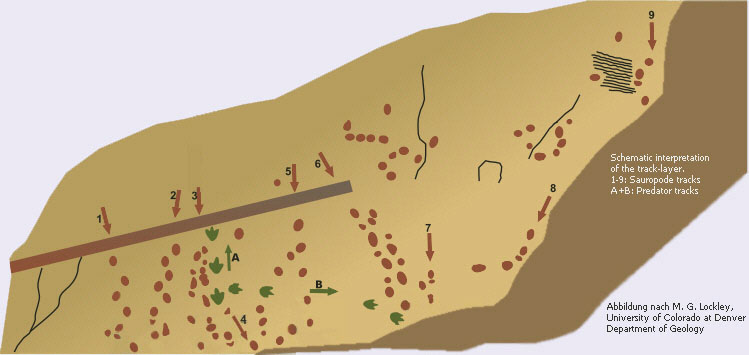
|
Dinosaurs of
Barkhausen-Riemsloh
These are the most important quotations from the visitor info-boards on the location of the dinosaurs' footprints: |
 |
A little herd
|
Two lonersTwo more tracks were left by another dinosaur species. These dinosaurs went on two feet and had a three-toed footprint. One track runs upwards, meaning in southern direction. The second, more blurry track runs from left to right (westwards). The three-toed footprints presumably were left by a big predator. These huge animals walked on two legs and probably were fast runners. |
Did these dinosaurs walk through the Wiehengebirge?No way! They went along a
coastline! Who tells us, that it
was a
Megalosaurus, that left its footprints here 150 Million years ago?
No skelletons, no bones
and
no imprints of skin. All, that the dinosaurs left here in the late
Jurassic
age, were their footprints. Nevertheless we know more about these
animals than
their shoe size.
Layers of the same ageThe most important hint
that
we get is the age of the rock layers carrying the footprints.
Everywhere in the
world we can find layers of the same age like in this quarry. In some
cases,
bones or even skelletons were found in these rocks. The feet of
Megalosaurus-skelettons fit well into the three-toed footprints.
A huge predator
An
adult Megalosaurus like this reconstruction had a body-length of about
nine meters and an estimated
weight of 900 kg. It walked on its two legs while with its short, but
strong arms it could grab its prey. Bones that were found in many
places allow
quite good reconstructions. Nevertheless there are many details left,
where guessing
is all we can do.Many open questionsSource: TERRA vita, Naturpark Nördlicher Teutoburger Wald, Wiehengebirge, Osnabrücker Land e.V. |
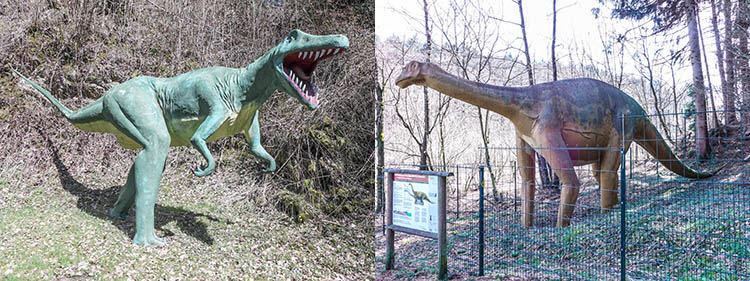 Models of a megalosaurus
and sauropod on
Barkhausen location.
All photos by Rolf
Badenhausen.
|
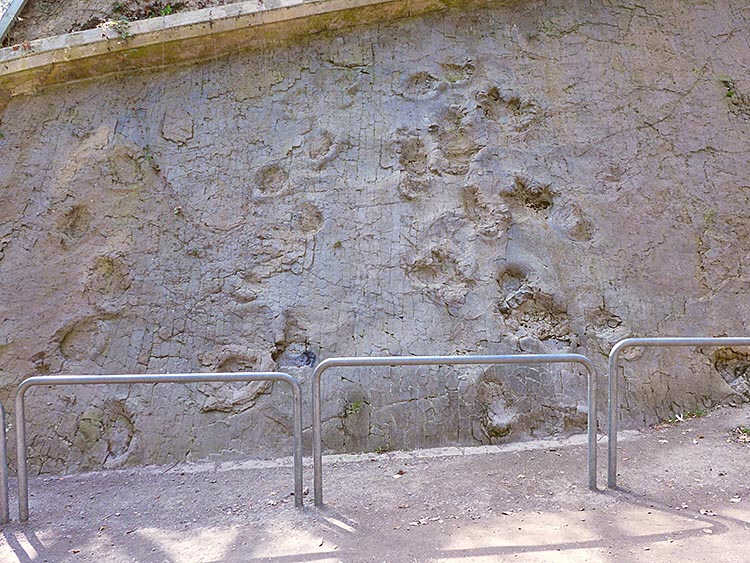 |
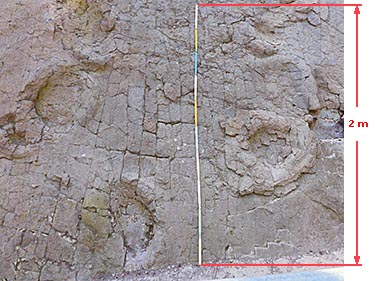 |
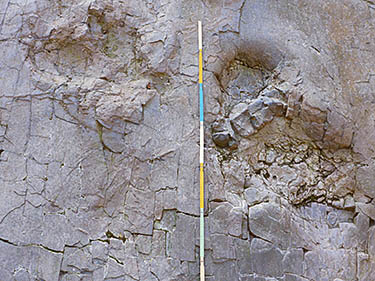 |